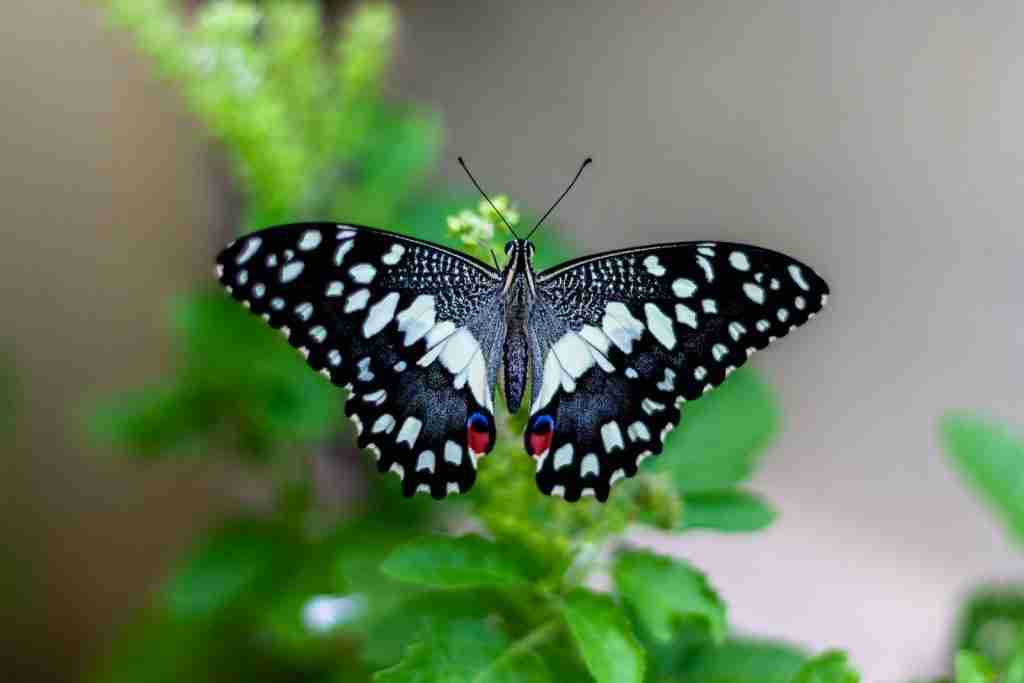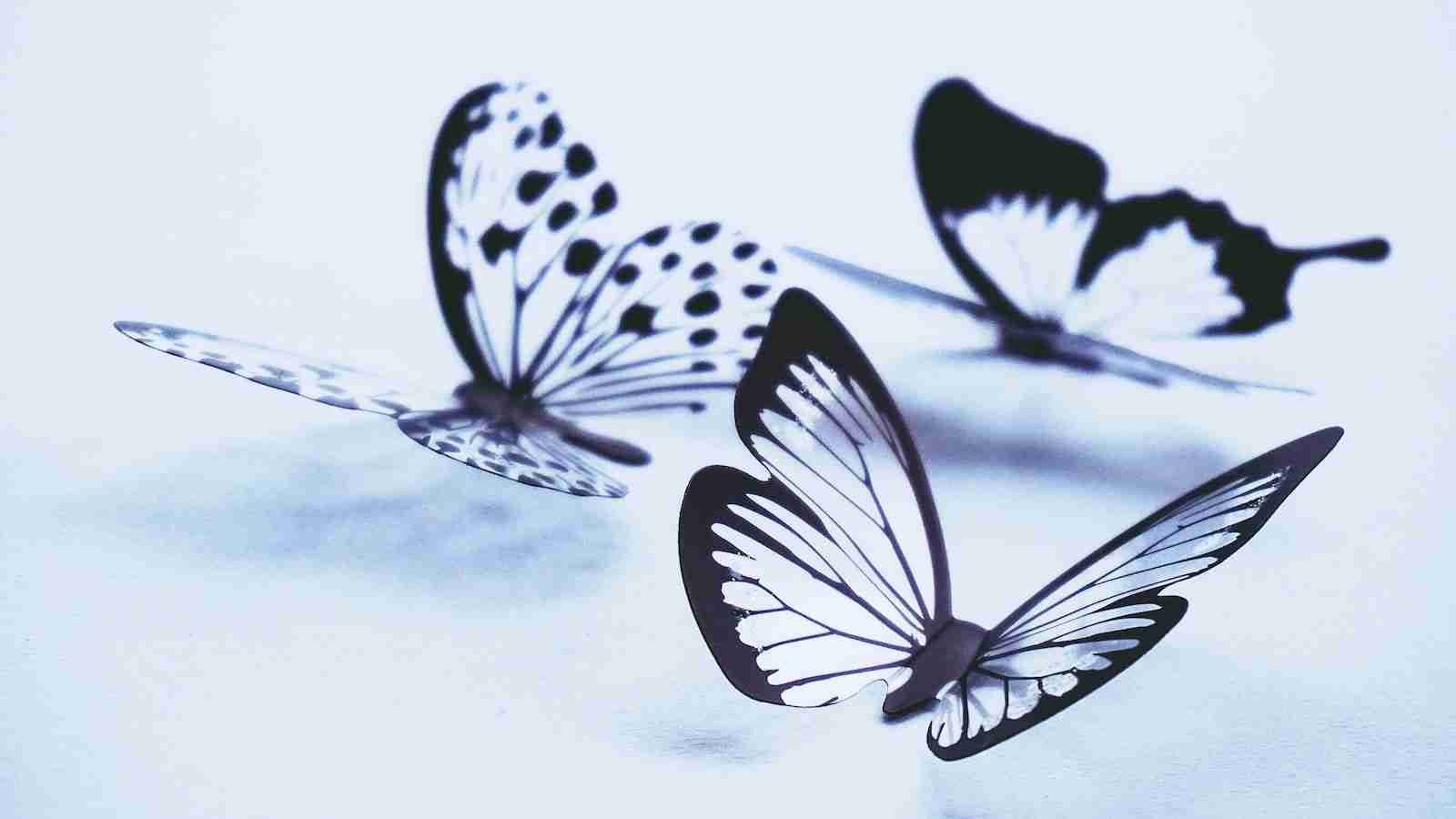24 Beautiful Facts About Butterflies You Didn’t Know
1. Butterflies are insects and belong to the order Lepidoptera.
Butterflies are a member of the insect family. They inhabit all but the frozen corners of the world and have been doing so for millions of years.
It may surprise you to know that butterflies are a diverse order, with as many as 22,000 species scattered across even an ordinary backyard.
Of this incredible array of life, they all fall under the same upper classification: Lepidoptera. This linguistic grouping can roughly be translated to “scale wings” – aptly describing where butterfly wings unfold from in variable colors and patterns that set each species apart.
Lepidopteran behavior is fascinating in its own right, with intricate species-dependent mating rituals and some migrating thousands of miles annually.
2. Butterflies have large, colorful wings and long slender bodies.
Butterflies are a sight to behold, with their large and colorful wings giving them bewitching beauty.
Their bodies are sinuous–elongated and lithe–enhancing the regal statues moments they take on while they spread their wings in search of nectar.
Every single species has uniquely brilliant tones and shades that adorn the canvas of a creature as if born of royalty.
3. Butterflies undergo a complete metamorphosis, changing from a caterpillar to a chrysalis to an adult butterfly.
Butterflies start off in their life cycle as a caterpillar, eating away eagerly upon the leaves of plants.
Within this stage, several physiological changes and transformations will occur before they start to transition into a chrysalis.
Then, within the cozy hiding place of its chrysalis, brilliant hues and vibrant wings will slowly begin to fill out, culminating with crawling out of its former identity as an adult butterfly, beautiful and free!
4. Some species of butterflies can fly up to 30 miles per hour.
Many butterfly species can take flight with relative ease and speed. They possess the powerful capability to reach startling speeds of up to 30 miles per hour! That’s fast enough to cost this beautiful insect a close second behind its hummingbird relatives.
Such flexibility of movement provides handy means of locating nectar sources, other pollinators, and potential mates for the thousands of butterfly species across the world.
Who knew such a delicate creature could move so fast? Some prudent butterfly descendants have even hatched plans for high-speed adventures that last for days at a time as they search for new terrain and territories delicately maneuvered solely by the guidance of seamless yet evasive flight mechanics.
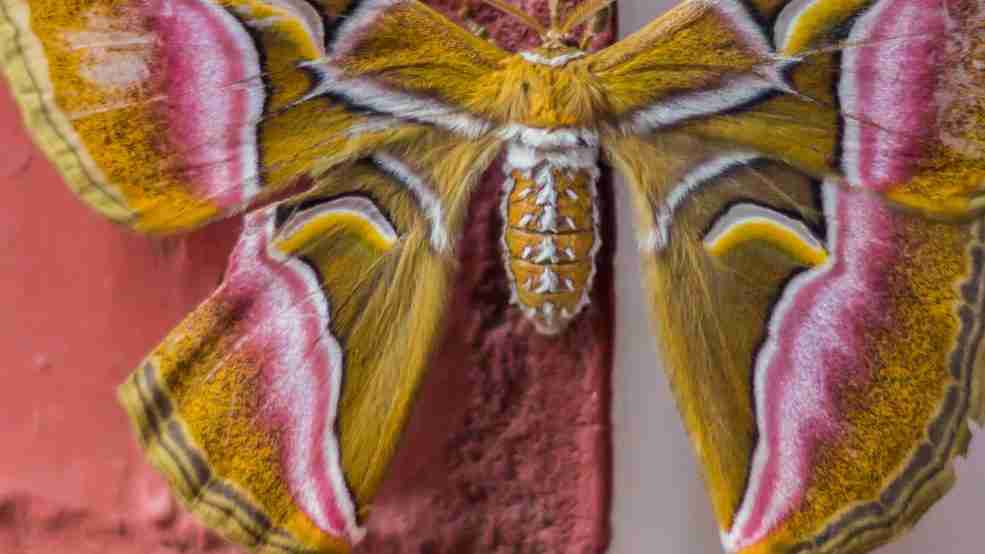
5. Butterflies have taste receptors on their feet, allowing them to taste the food before they eat it.
The fascinating ability of butterflies is that they have taste receptors on the bottom of their feet. This enables them to detect the flavoring of food before deciding to consume it.
By doing so, butterflies are able to discern what food will make a great meal or not from even a tiny sampling. Not only that, but this feature also allows them to easily perch and lick up liquid using their feet.
In fact, there has been research done showing that butterflies specifically prefer sweet foods over less sweet ones as much as 185 times!
6. Butterflies can see ultraviolet light, allowing them to see things that are invisible to humans.
Butterflies possess an extraordinary ability: they can see ultraviolet light. This means that things that are invisible to us humans can be easily seen by a butterfly’s eyes.
Imagine, beyond our visible spectrums lies a range of colors only accessible to the special few.
Butterflies among other creatures have the distinct advantage of being able to detect high-frequency light waves.
7. Butterflies use their proboscis, a long, straw-like mouthpart, to drink nectar from flowers.
Delicate and dainty butterflies make use of a unique feature in order to gorge on sweet nectar. This treasure trove is referred to as a proboscis – an elongated, straw-like mouthpart.
Once attached to a flowering plant, the butterfly will furl its proboscis’ length around the source of rarified nectar produced by its flowery host, thus harvesting nature’s handily designed treat for itself.
That is how—with characteristic grace—these captivating creatures meal prepping with their proboscises!
8. Butterflies are important pollinators, transferring pollen from flower to flower as they feed.
Butterflies are critical for wildlife ecology, pollinating innumerable plants and dutifully transferring pollen from one flower to the next as they hover in search of nectar.
Without them, fragile ecosystems faced difficult challenges to thrive — challenges that the much-loved butterflies help eliminate with their constant fanning of flowers. Just like birds, bats or bees, these godsends contribute greatly to nutrients to native biodiversity.
If there were no butterflies buzzing away, something extraordinary would undoubtedly be missing from the environment; Those multicolored flying wonders add a little bit of magic to each sunny day!
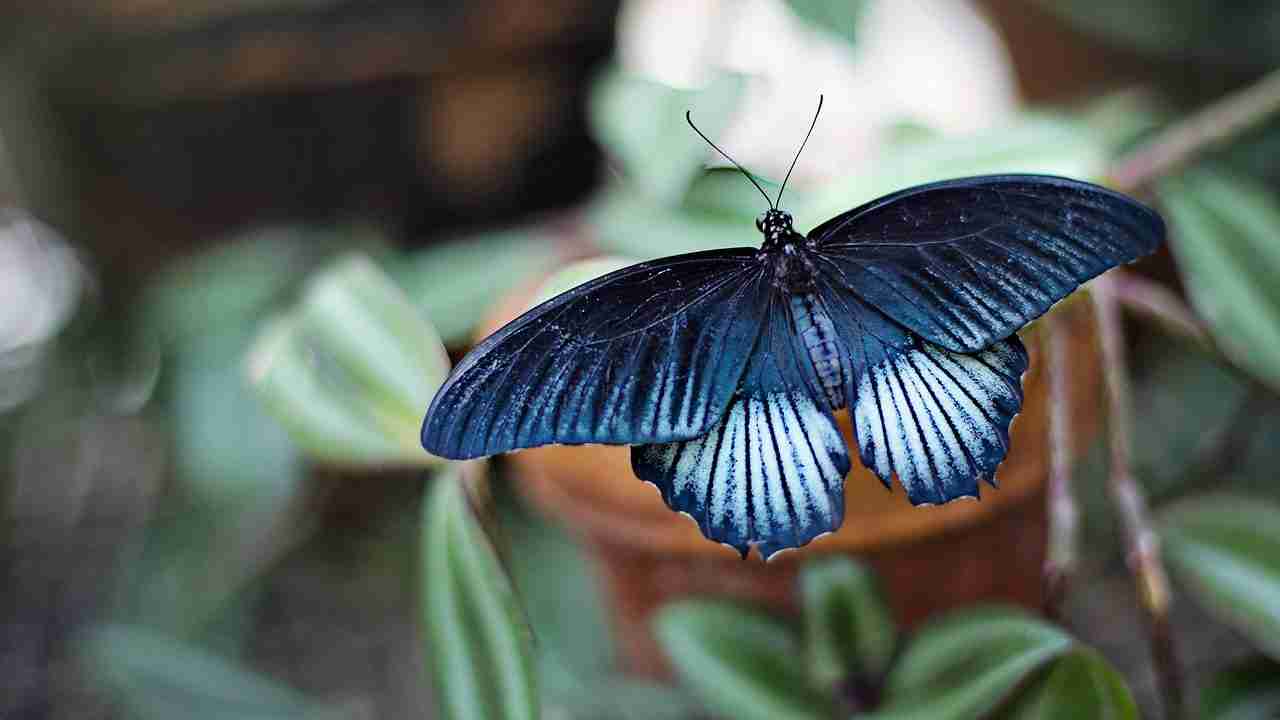
9. Butterflies play a crucial role in the food chain, providing food for predators such as birds, spiders, and lizards.
Butterflies play a crucial role in the global food chain. They are an important source of food for predatory birds, who rely on them as a steady meal option. Spiders also lure the small insects to their deadly traps, while lizards may hunt them down and devour them.
Allowing these predators more sources of prey help keep their populations stable, impacting the lives of creatures much higher up on the food chain.
The seemingly fragile butterfly plays a substantial part in creating balance in our delicate ecosystem– all from just fluttering through fields of flowers.
10. The average lifespan of a butterfly is only 2 to 4 weeks.
Butterflies have one of the shortest average lifespans of any insect. On average, adult butterflies will only live for a couple of weeks. Surprisingly, butterflies rarely live for more than four weeks in the wild.
Yet, this does not take away from their importance and beauty during that brief window of time.
From changes in morphology and color to astounding feats of flight and navigation, adult butterflies make their presence known quickly but with such a remarkable impact on our ecosystems that lasts even after they have met their untimely end.
11. The largest butterfly in the world is the female Queen Alexandra’s birdwing, which has a wingspan of up to 12 inches.
Queen Alexandra’s birdwing, native to the New Guinea region, reigns as the world’s largest butterfly. Astoundingly, the female of this species can have a wingspan of up to 12 inches!
It is approached in size only by its larger metallic blue velvety male counterpart. While they reach an immense size, they are unfortunately considered vulnerable and have declined rapidly in population due to pollinator habitat loss and the introduction of non-native insect species into its native range.
In addition, illegal trade is taking a toll on these captivating insects.
12. The smallest butterfly in the world is the Western pygmy blue, which has a wingspan of only 0.5 inches.
The Western Pygmy Blue butterfly is the smallest in the world! With an incredible wingspan of just 0.5 inches, it may be tiny but it can surely still make an impact.
In fact, these butterflies form part of the natural beauty that enhances our environment and teems the outdoors with unique creatures. It’s faint hue gives a subtle splash of color when spotted.
13. Butterflies are found all over the world, except for the poles and some deserts.
Butterflies are a truly global species, fluttering in every corner of the world.
From thick temperate forests to rolling grasslands and sandy seashores…you’re almost sure to find at least one or two of them throughout the summer months.
But, wherever you may bring your curious eyes in search of dragons, chances are they won’t be spotted in Antarctica or any of the extremely arid deserts.
14. Some species of butterflies migrate thousands of miles to escape colder climates.
Certain butterflies take on great journeys, migrating thousands of miles to escape harsh winter climates.
These ambitious creatures are gifted with a sense of direction and immense strength, as they navigate through long distances to find a warm summer sanctuary.
The snow may blanket vast areas, but it doesn’t bother them. With an indomitable spirit, they soar through the air and search far away lands above the clouds until they arrive in lush meadows with nectar filled ambrosia.
15. Butterflies can recognize their own species by the patterns on their wings.
The wings of butterflies feature stunning variety! Not only are they beautiful to behold, they also serve a vital purpose.
When another butterfly crosses paths with one of its own species, it has the ability to recognize them through the unique patterns that adorn their wings.
These intricate designs help in both camouflage and identification: serving as a way to blend into a natural habitat or to allow it to find one belonging to its own very family.
So what may appear at first glance as nothing more than aesthetically alluring build blocks of color, is actually a clever evolutionary strategy all enmeshed within a vibrant and diverse community.
16. Butterflies use pheromones to communicate with other butterflies and attract mates.
Butterflies use complex language to connect with one another – pheromones! These small signals allow them to find a mate and tirelessly connect with their community.
The scent carefully conveys information in the form of small particles that can tell butterflies where to go and who’s around.
Pheromones have been successfully used by these creatures for generations, an employ of scents for interpersonal communication unique butterfly kind.
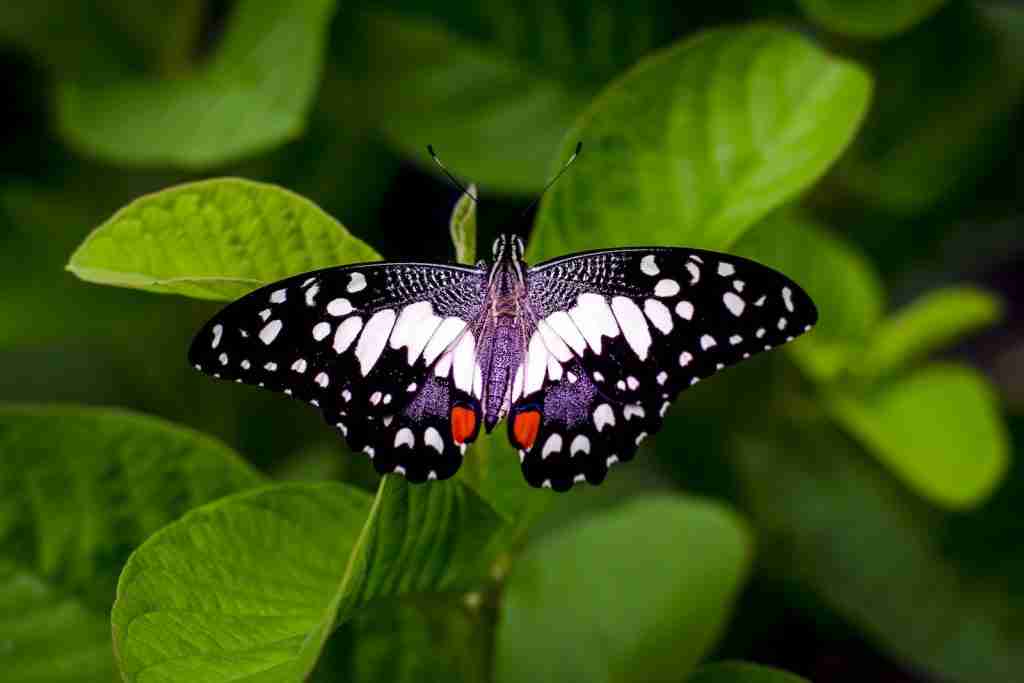
17. The chrysalis, or pupal stage, is where the butterfly undergoes its transformation from a caterpillar to an adult.
The chrysalis, or pupal stage, is a fascinating metamorphosis that butterflies undergo as part of their life cycle.
Inside the enclosure, the butterfly begins transforming its body from a small caterpillar to an adult that is full of color and beauty. Special organs called imaginal disks begin differentiating the lepidopteran’s body into smaller parts like wings, head, and legs.
Meanwhile, some of its own tissues are gradually degraded over a period of time while others are reshaped in order to form its new anatomy.
18. Butterflies can detect changes in the environment, such as changes in temperature and light, through their antennae.
Butterflies are able to sense changes in their environment that affect their well-being by using their antennae. This includes fluctuations in temperatures, as well as disruptions in the light of their surroundings.
They possess remarkable biological adaptations that allow them to respond acutely to the slightest shifts of change.
Their innovative antennae use algorithms similar to those found in a computer program to interpret stimuli from the environment.
By sensing these external dynamics, butterflies can react quickly, adapting behavior and habitation preferences accordingly.
19. Butterflies have been around for at least 40 million years.
According to historians, Butterflies have been a part of our planet’s diverse array of life forms for the past 40 million years.
They are one of the oldest species still inhabiting Earth, with fossilized remains found behind in specimens as ancient as 70 million years!
Due to their impressive lifespan, they even survived four mass extinctions that have occurred across millennia.
20. The largest butterfly migration on record occurred in Texas in 1875, when billions of monarch butterflies covered the state.
In 1875, Texas underwent a stunning metamorphosis. For months on end, billions of butterflies poured into the Lone Star state in a grand sojourn like no other.
It was the largest butterfly migration on record; monarchs carpeted the state from one end to another in an awe-inspiring spectacle that remains unparalleled to this day.
Together, the inhabitants of Texas witnessed an event that brought meaning and wonder to everyday life, while simultaneously harboring countless secrets still undiscovered by science.
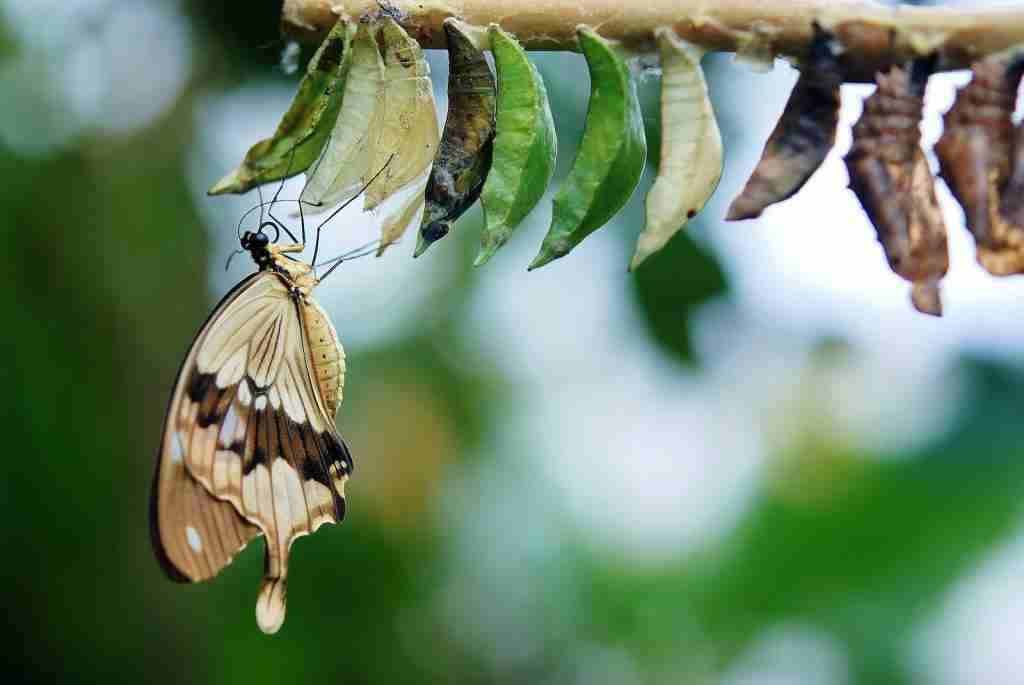
21. Butterflies can hear through their wings, which pick up vibrations from the environment.
Have you ever wondered how butterflies have such amazing senses? While it may surprise you, the answer is related to the wings of these gentle creatures.
It has been discovered that their wings can act as a form of “hearing,” picking up environmental vibrations.
This allows them to easily identify different sounds in the area surrounding them, which is an important part of their life cycle and serves as a natural defense system!
In essence, their wings can provide them with a way to take in information about their environments without actually seeing it.
22. The female butterfly is usually larger and has a broader body than the male.
The female butterfly is a distinctive creature. Comparatively speaking, these beautiful creatures have larger wings, an expansive silhouette, and an overall broader body than those of their male counterparts.
With the vibrant hues often exhibiting lighter tones near the tips of their oversized wings, their extraordinary beauty is unmatched.
Although seemingly delicate, their wings are masterfully constructed with greater surface area to establish lift as they gracefully soar through the sky.
Ultimately resulting in a fundamentally wider frame and delivering a mesmerizing experience rivaled by no other.
23. Some species of butterflies have a symbiotic relationship with ants, exchanging food for protection.
Some species of butterflies have evolved beyond the basic interaction that typically exists between different types of animals.
Their relationship with ants goes beyond simply procuring sustenance; they’ve formed a symbiosis where both animals benefit mutually.
Butterflies offer sugary nectar through specialized glands to ants in exchange for protection from predators. This relationship is advantageous for both butterflies and ants, ensuring their survival.
24. The wings of some species of butterflies are iridescent, reflecting light to create a shimmering effect.
Butterflies are born with exquisite beauty, one, even more, impressive than it appears. Some species’ wings possess an even greater charm; they adapt to their environment by reflecting a variety of different lights and colors.
The phenomenon is known as iridescence, while the stunningly intricate pattern radiating from these creatures’ wings can only be described as a shimmering effect
